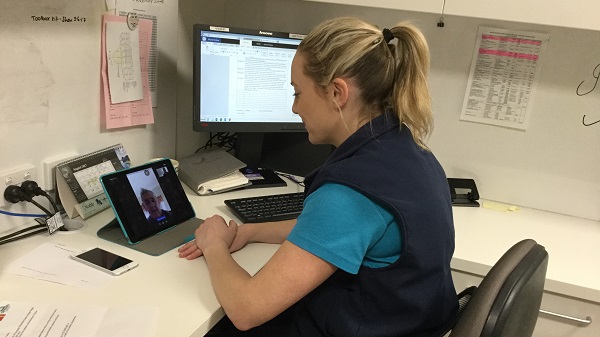Clever website for stroke treatment is life-changing resource
Victims of stroke – caused by a lack of blood flow in the brain – can experience a wide range of health problems, making it difficult for them to resume normal life. They might face challenges moving limbs or a loss of sensation, as well as endure problems thinking and speaking.
“A lot of people who’ve had a stroke also experience depression associated with the frustration of having these new impairments and not being able to do the things they used to do,” says Dr Melissa Nott a researcher and occupational therapist at Charles Sturt University in Albury, NSW.

While there are detailed National Stroke Guidelines, which instruct Australian
clinicians on the best evidence-based practice for treating sufferers, a 2016
report from the National Stroke Foundation found that the number of health
workers using them had fallen to less than 50%.
This was in part because the hundreds of pages of guidelines were not user-friendly, Dr Nott says. “To find the bit that relates to what you want to do with your client can be challenging and time-consuming, and the way that the guidelines are written is sometimes hard for clinicians to understand and implement.”
The report spurred Dr Nott, and co-lead researcher Dr Leah Wiseman from Albury Wodonga Health, to create a website with easy-to-use resources to help health workers find the best treatments and aid those in rural areas access information and techniques that might otherwise not be available to them.
“We wanted to create resources that made it really simple and time-efficient to implement best practice,” Dr Nott says. Launched in April 2017, the Best Evidence for Stroke Patients (BEST) website allows clinicians to “provide a better-quality treatment to their patients, with a better outcome”.
The site particularly focusses on helping people recover cognition and arm function, which are most important for independence at home. Around 50% of stroke victims suffer limb impairments and about a third report problems with memory, concentration and attention, Dr Nott says.
The site features simple information sheets for clinicians and patients, as well as step-by-step guides and short educational videos.
The researchers created clips of themselves performing treatments that clinicians could watch and replicate, perhaps with the help of an iPad within the patient sessions. “We wanted to give clinicians real hands-on tools and resources to use, to enhance their confidence,” she says.
And the results of a two-year study certainly indicate success in reaching this goal. After completing the BEST program, the proportion of clinicians saying they were at least moderately confident in implementing the National Stroke Guidelines jumped from 50% to 88%.
The resource is of particular use in regional NSW. Sufferers of strokes in rural areas are at greater risk of severe impacts, because they can’t get to a hospital as quickly and are less likely to be cared for in specialist stroke units.
“That puts people at a disadvantage from the beginning, because they’re going to have more severe symptoms and a slower recovery… It’s kind of a double whammy,” she says. “Further down the track the benefits of the therapy are reduced because it’s not specific to someone that’s had a stroke.”
The 2016 National Stroke Foundation report also showed that one in five stroke patients were being sent home without a plan for ongoing treatment, which increased the chance of it happening again.
“For a lot of people, once you’ve had one stroke, you’re likely to have another within 10 years,” says Dr Nott. “We wanted patients and families to have more knowledge about what they could be doing after they went home. The BEST study website allows them to continue accessing rehabilitation even after leaving hospital.”
Funding from the NSW Health’s Translational Research Grants Scheme covered the technical resources to build the web site, as well as the cost of local hospital-based champions to show clinicians in different health districts how useful the resources are and how to get the best out of them.
The initial BEST project focused on hospitals in the Murrumbidgee and Albury Wodonga local health districts, covering south-western NSW. Funding in 2019 from the NSW Agency for Clinical Innovation is now allowing the program to be expanded to the North Coast, Mid North Coast and Southern local health districts.
By John Pickrell
Related links
Best Evidence for Stroke Patients website
Updated 5 months ago